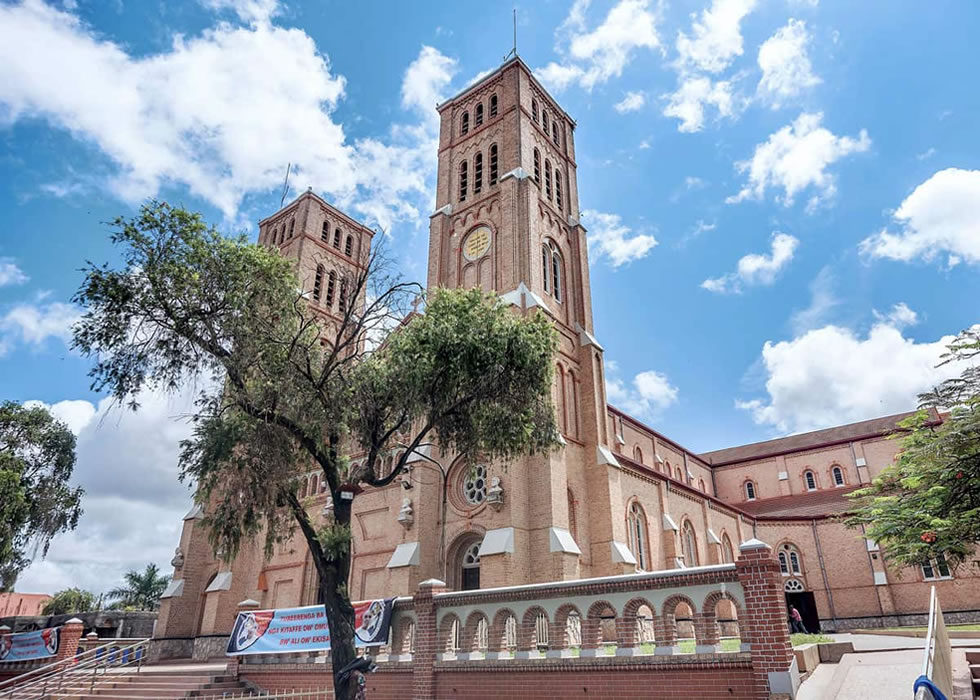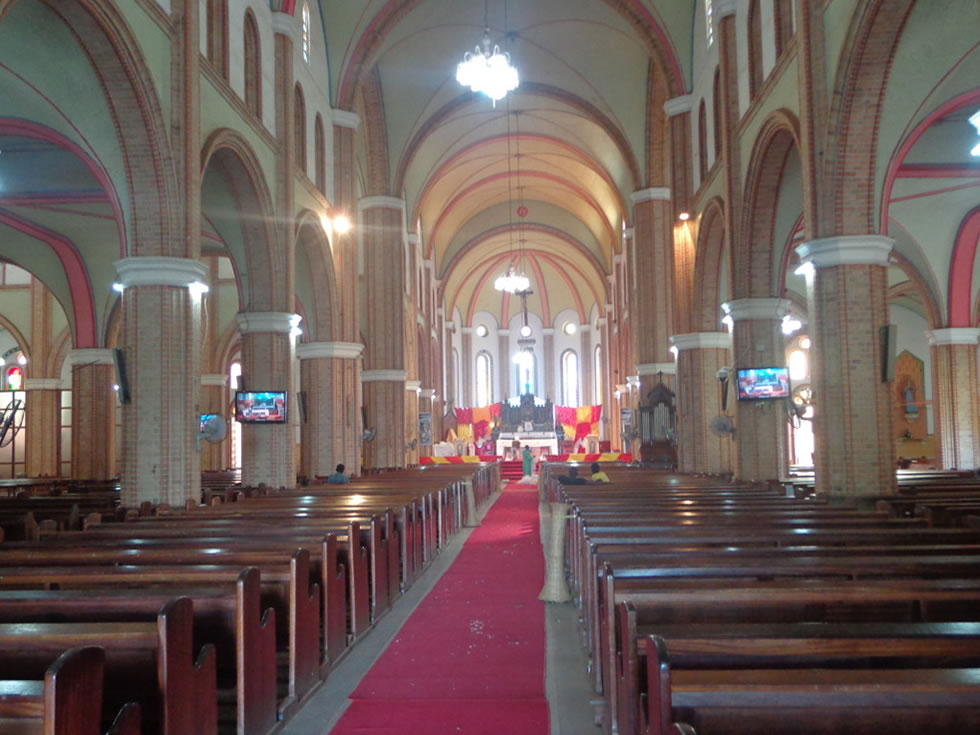St. Mary’s Cathedral Lubaga (also written as Rubaga) is situated on top of Lubaga hill, one of the 7 hills of Kampala. This cathedral is a cornerstone of the Catholic Church history in Central Africa. Its location offers a great scenery view of Kampala city and its cosmopolitan buildings that are visible from all angles. Built in 1914, the cathedral houses the remains of the late Archbishop Joseph Kiwanuka (June 25, 1899 – February 22, 1966), the first African Central Africa Catholic Bishop and the first African Archbishop of Kampala Diocese. On its walls are the statue heads of the missionaries that brought the catholic faith to Kampala and these include Rev. Fr. Simon Loudel Pierre (also known as Mapeera) and Brother Amans.

The Kabaka Mwanga donated the Rubaga hill to the early Catholic missionaries through Bishop Joseph Hirth in 1891. The place where the cathedral is currently located was once a palace for Buganda’s Kabaka Muteesa I.
The current cathedral is the seventh to occupy the Rubaga hill. Between 1891 and 1914 when the construction of the current cathedral began, the hill gave shelter to six “cathedrals” made up different structures which unfortunately all disappeared under different circumstances like religious wars, increase in number of new converts to Catholicism.
The twin-towered Roman Catholic Church was restored for the Pope’s visit to Uganda. It has great historical significance in the history of the Catholic Church. The transept is a memorial to the Uganda Martyrs. 22 Catholic victims, later declared saints, are enshrined in the stained-glass windows. It overlooks the city and is a large complex that takes in various functions of the church and surrounded by beautiful trees plus flowers.
It was again here on July 29, 1969 that Pope Paul VI closed the African bishops Synod hosted by Uganda while Pope John Paul II too came here on February 8, 1993, where he met Catholic bishops and priests after a prayer service. He planted a tree in the courtyard and also inaugurated the memorial clock near the parish entrance which still stands today.

St Mary’s Cathedral Rubaga as seen today is said to accommodate 5,000 worshippers. It is 248 feet long (260 if the walls are considered) and 63 feet wide. The transept measures 152 feet (162 including the walls) while the height from the floor to the ceiling is 50 feet. Some 2.5 million bricks were used to complete the Cathedral. The idea of building this “mother-of-all-churches” in Uganda came from Bishop Henry Halon in 1901, who launched an appeal to all Catholics to contribute financially towards a building fund.
Rubaga Cathedral is a significant religious site, visited by many tourists and located on the Rubaga hill in Kampala. Rubaga Cathedral is one of the landmark buildings, which was restored during the time of Pope’s visit in Uganda. The cathedral is one of the remarkable edifices, from where you can have magnificent scenic views of the city. Many religious worshippers come here every year to offer their services and spend some time here. After visiting the Cathedral, you can enjoy the scenic beauty of the place and relax amidst the natural surroundings.
